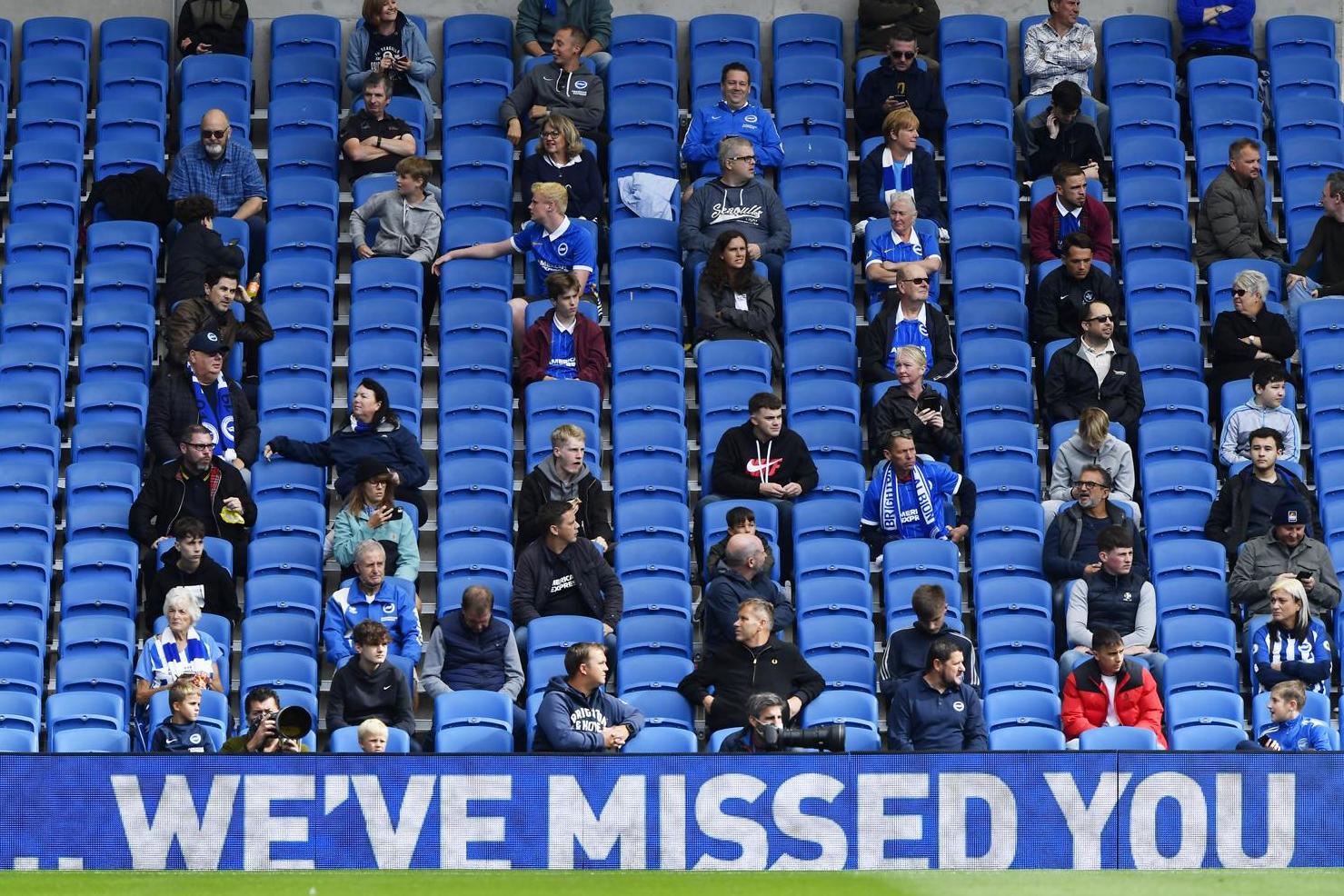It is likely tickets will be available only to home fans and priority given to season-ticket holders, as was the case when spectators returned to top-flight football matches in Germany before they were subsequently banned again in October.

Fans at sporting events - what difference can crowds expect?
Supporters will be allowed in stadiums from next week but the matchday experience is set to be very different.
Clubs will find out which of the three tiers of restrictions will apply to their venues and how many spectators they can welcome back on Thursday.
But guidance that informed the pilot events held earlier this year gives a sense of what fans can expect.
It states that fans should “take extreme care when shouting, singing or celebrating”.
Spectators must also “avoid hugs, high-fives and any close contact with people who are not within your social or support bubble”.
Elite sport in England has largely been played behind closed doors since the first coronavirus lockdown in March – what will it look like when crowds start to return?
Who and how many can attend?
When the four-week lockdown in England ends at 00:01 GMT on Wednesday, 2 December, up to 4,000 fans will be allowed at outdoor events in the lowest-risk, tier one areas, falling to a maximum of 2,000 people in tier two, but none in tier three.
Indoor venues in tiers one and two can have a maximum of 1,000 spectators and the number of fans must not exceed 50% of any venue capacity.
Premier League clubs including Everton, Brighton, West Ham and Leicester say they will hold a ballot, while others told BBC Sport on Tuesday they were waiting for further clarification from authorities before announcing their plans.
It is not yet clear whether fans will be told not to travel from higher-risk tier-three areas to attend events in tiers one or two.
Spectators have been able to watch non-elite sports in a limited capacity before now, with football fans able to attend games at seventh-tier grounds and below since the middle of August, provided they adhere to social distancing guidelines.
What else is in the protocols?
The Sports Grounds Safety Authority (SGSA) published a sample spectators’ code of conductin August to help venues draw up their own codes to provide to fans before attending events.
The English Football League expects the SGSA plans, which would have been used had the planned return of fans from 1 October not been cancelled amid a rise in coronavirus cases, will still be applied.
It recommends that spectators remain in their seat or place “at all times whenever possible” and “avoid face to face contact” with other fans when moving past each other.
The guide says venues must decide whether masks should be worn at all times or only when moving around and must tell fans beforehand.
Spectators will also be encouraged to use hand-sanitiser dispensers and expect one-way systems on entry and exit points and markers to allow for social distancing in queues.
What about food and drink?
The SGSA guide does not expressly recommend that venues ban the sale of food and drink and there is no mention of alcohol in the document.
However, it states that in deciding what measures to introduce and when to open outlets, clubs should weigh up the risks that selling food and drink poses to spreading coronavirus or breaching social distancing.
It says all payments should be contactless and venues should avoid queues at peak times, potentially by introducing systems where fans can pre-order refreshments and collect them from designated points.
Clubs are advised not to produce printed programmes and not to hand out any promotional materials.
Will fans feel safe?
Such guidance was used during the pilot events that took place in England between 26 July and 3 October, before they were paused.
The SGSA, working with UK Sport and the University of Edinburgh, surveyed 1,821 spectators who attended the basketball, cricket, football, horse racing, rugby union and snooker pilots.
Their research found fans had “high trust” in organisers to maintain their safety and that the events helped them regain a sense of “normality” despite the extra restrictions in place.
The surveyed fans said that it was important that venues provided “clear and actionable information” on how to follow the safety measures both before and during the events.
Fans reported “very high adherence” to the safety measures and they felt other spectators “would keep one another safe”.
But the study also warned that a crowd feeling united could lead to a lowered perceived risk of the virus, which then lowers adherence to the measures.
It concluded that organisers should watch out for and discourage “previously normative behaviours” such as “chanting, hugging or sharing beverages”.
A ‘more symbolic than financial’ boost
Brighton chief executive Paul Barber says the return of limited crowds will provide a “more symbolic than financial” boost for Premier League clubs, and is an important “psychological step towards where we want to be”.
Brighton will have a ballot system to fill the available seats if they are in tier one or two, but Barber says a maximum of 4,000 fans is “not viable” for top-flight clubs in the long-term.
“It would probably see us operating at a matchday loss, but it’s more important than that,” he said. “It’s an opportunity for us to prove to government that we can bring fans back safely and it’s also good for us to be able to re-engage with our supporters, give them something for the loyalty they have shown us while we’ve been playing behind closed doors.”
Barber added that putting the “lightest possible touch” on fans’ normal matchday experience would be important for getting their cooperation.
“It’s a football match and we want people to come back and enjoy themselves again,” he said.
“I would hope that people would respect each other and look after each other, but we would hope also that they would sing and shout in all the right places as they have done for many, many years before now.”
Original article 24.11.20 on the BBC Sport website.
To view the original article click here
© The Fan Experience Company 2020
